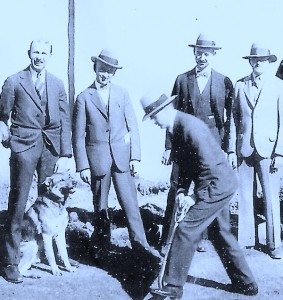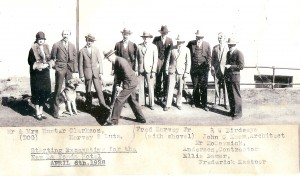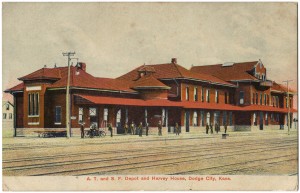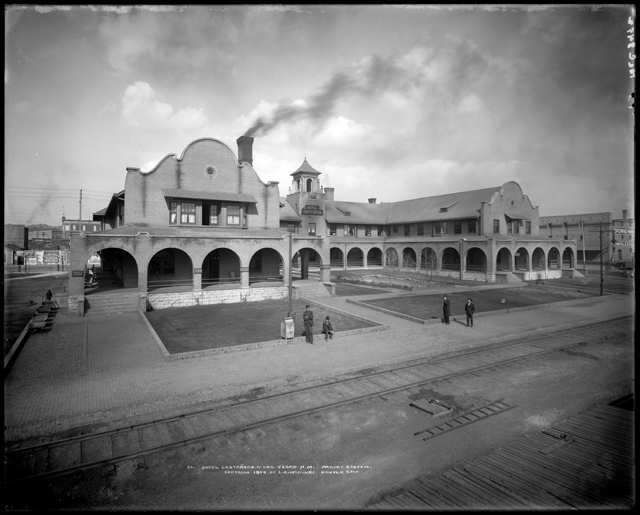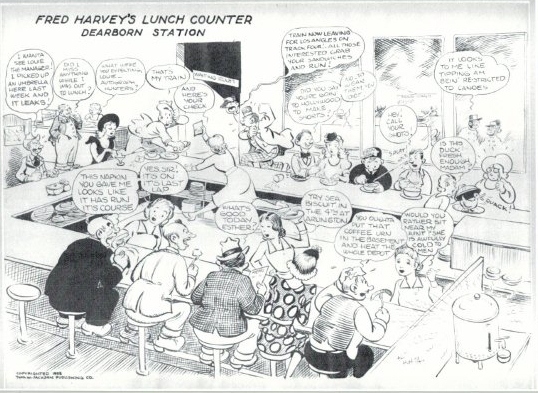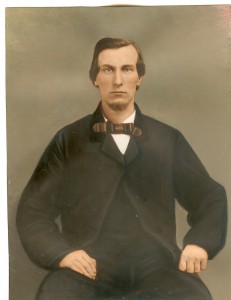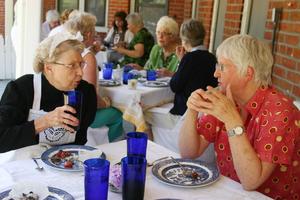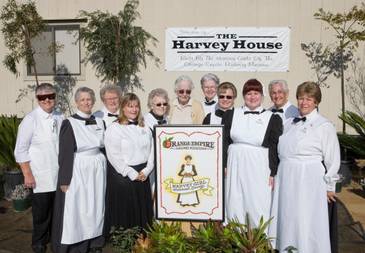In an excerpt from Appetite for America: Fred Harvey and the Business of Civilizing the Wild West–One Meal at a Time, how they celebrated July 4th in 1879 in the new American West.
Fred Harvey enjoyed Lakin, KS so much that in the summer of 1879, he brought his family there and invited the entire town out for a Fourth of July picnic.
The family had grown. He and his wife, Sally, now had five children: Ford, Minnie, May, Byron, and a brand-new baby daughter, Sybil. Besides the kids, three servants, and a rotating cast of dogs in the house and horses in their small stable, they had Sally’s mother, Mary Mattas, living with them now. The tiny Czech woman still spoke little English, but she communicated her love for her grandkids in other ways, such as praying for each of them in front of their bedroom doors each night. The whole family came along on the trip to Lakin, as well as Sally’s younger sister Maggie from St. Louis, who, at twenty-three, was more than ready to find a husband.
Fred chose Chouteau’s Island for the Fourth of July picnic, which was hosted by him and Sally and catered by his hotel. Prominent politicians, businessmen, and ranchers from all over southwestern Kansas flocked to the lovely spot in the Arkansas River, a Santa Fe Trail landmark since the early nineteenth century when a small band of trappers were said to have held off an attack by several hundred Pawnees.
The very young town of Lakin did not yet have an American flag for the celebration, so a group of local ladies volunteered to make one. Led by Mrs. Carrie Davies—a housekeeper at Fred’s hotel and the wife of the rancher “Wild Horse” Davies—they hand stitched the stripes and all thirty-eight stars. On the day of the event, the entire Davies clan proudly rode together, on horseback and in coaches, behind their flag bearer, C. O. Chapman. His mettle was tested, however, when the section of the Arkansas River they needed to ford to reach Chouteau’s Island turned out to be deeper in the middle than expected. Suddenly Chapman and his horse were completely submerged. He was barely able to hold the flagpole above his head until someone could rescue it— and then him.
Among the guests at the picnic was Colonel R. J. “Jack” Hardesty, one of the richest ranchers in the West. Hardesty lived in nearby Sargent, but his cattle, branded with a half circle over a lazy S, grazed farther south in “No Man’s Land,” the thirty-four-mile stretch that had remained unclaimed when Texas declared statehood in the 1840s and later became the odd little panhandle of Oklahoma. (The town of Hardesty, Oklahoma, was named for him.)
The Kentucky-born Hardesty had made his first fortune going west to mine in the 1860s, and he invested that money, including $10,000 ($243,000) worth of gold he claimed to have carried in his belt, in Texas cattle. He had a reputation for being a gentleman rancher—his cowboys knew better than to swear in front of him—and a generous host. Hardesty often sponsored grand parties: His Christmas ball in Dodge City was considered the social event of the year. But except for his golden retriever, Tick, he was alone at age forty-six, one of the most eligible bachelors west of the Mississippi.
Until he met Fred Harvey’s sister-in-law Maggie Mattas.
After the picnic, everyone went home to change for the July 4th gala at the Lakin depot hotel, for which a band was imported from Pueblo. As the ball began, Fred and Sally Harvey were asked to lead the Grand March. At one point in the evening, Sally saw her petite sister dancing with muscular Jack Hardesty—who looked every bit the western gentleman in his full beard, Stetson hat, and highly buffed cowboy boots—and knew that Maggie had finally met a man who would change her life the way Fred Harvey had changed hers.
Only months later, the couple was married at the Harveys’ home in Leavenworth. They moved into a fine new house in Dodge City, just a block away from the city’s most infamous tourist attraction—the Boot Hill Cemetery, where all the desperadoes from the city’s early days were allegedly buried with their boots on.
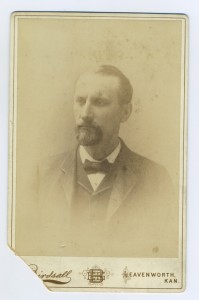
This article is copyright © 2024
